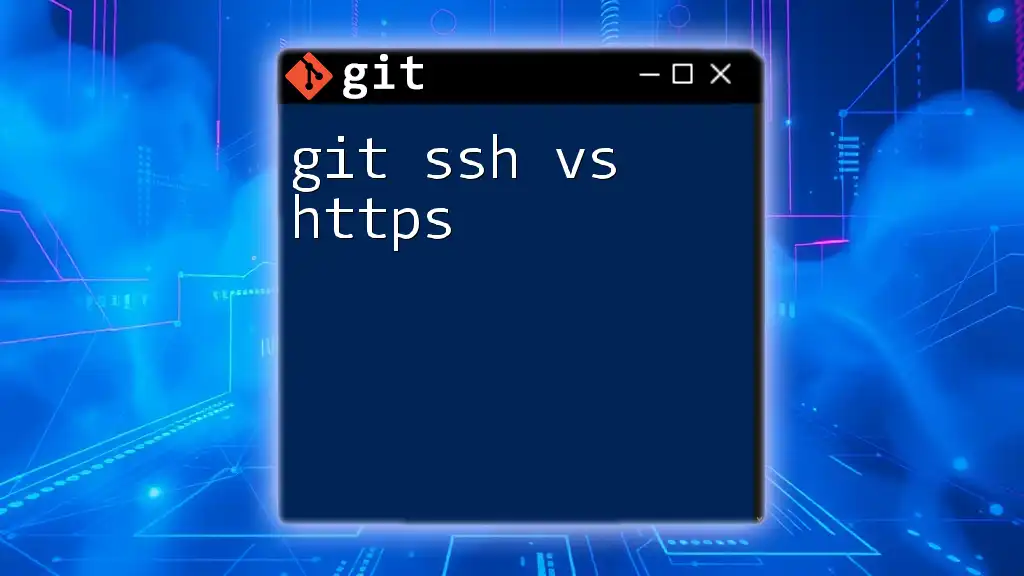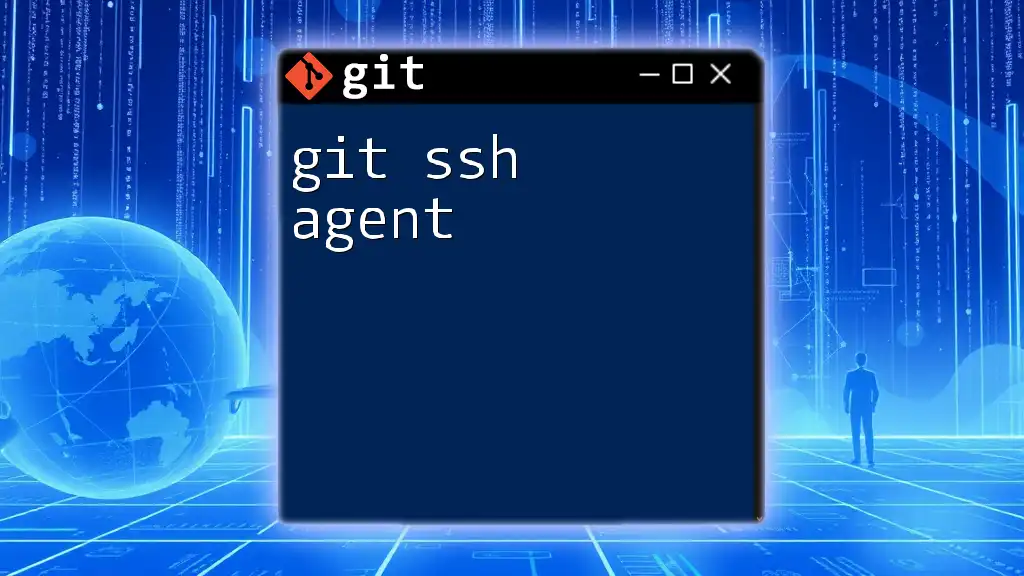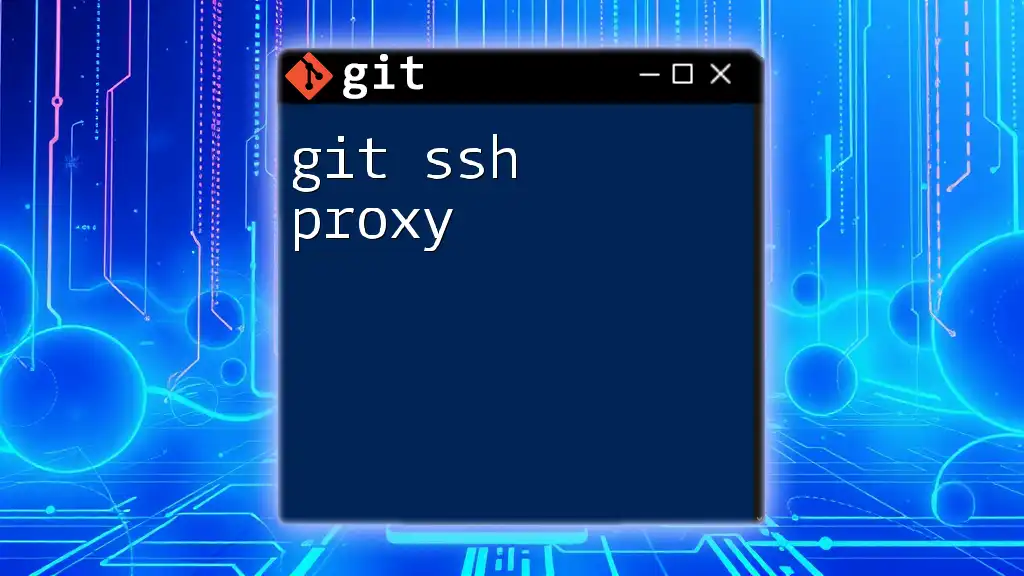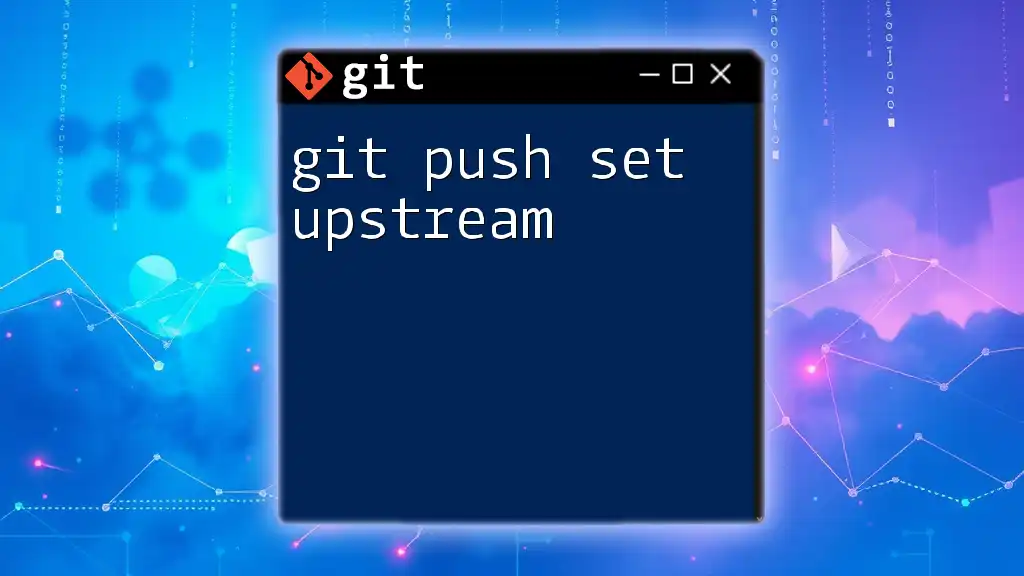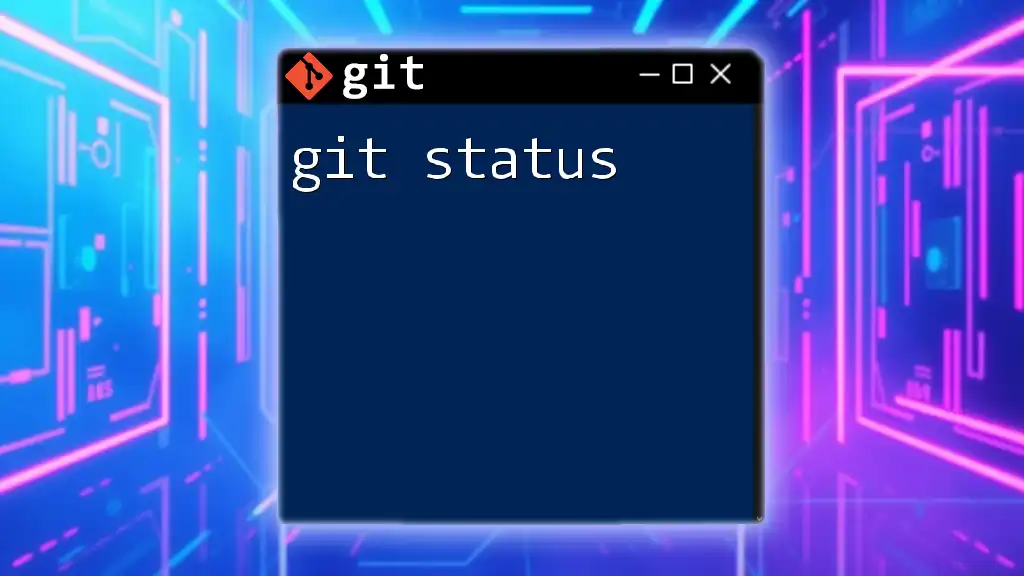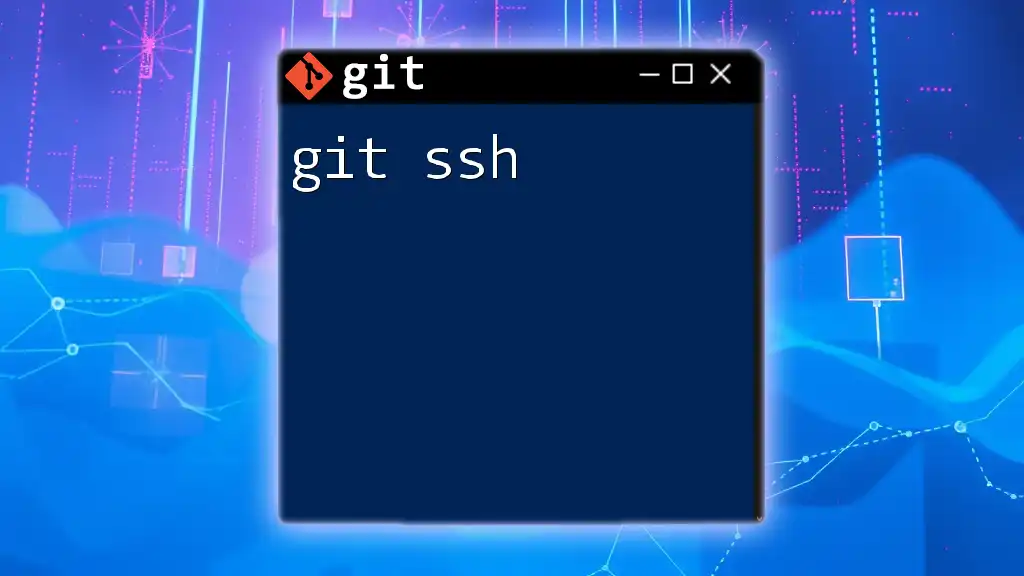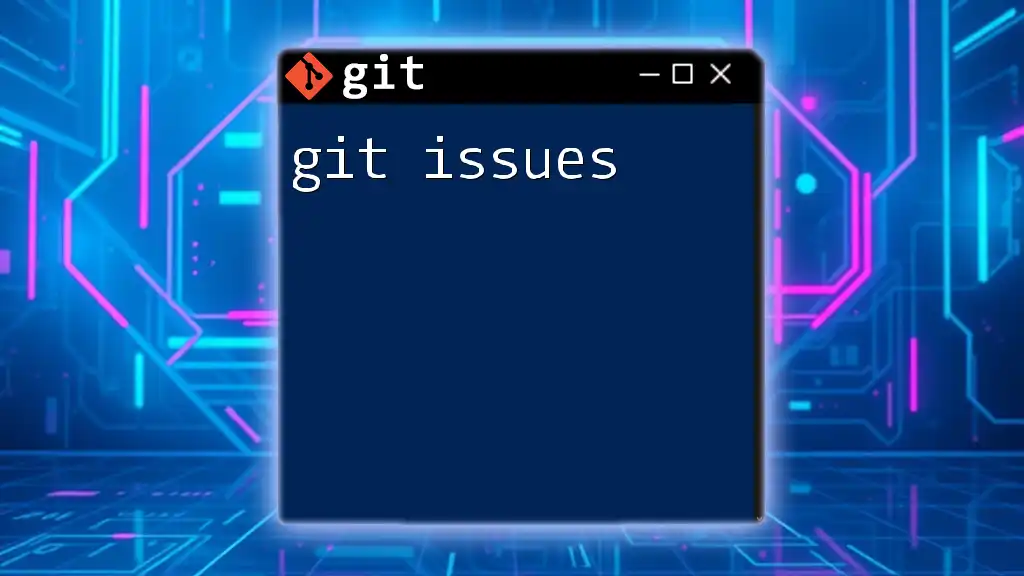When cloning a repository, using SSH provides a secure method that requires setting up a key pair, while HTTPS offers a simpler approach that may require entering your username and password each time you push changes.
# Clone a repository using SSH
git clone git@github.com:username/repo.git
# Clone a repository using HTTPS
git clone https://github.com/username/repo.git
Understanding Git Authentication Methods
What is SSH?
SSH, or Secure Shell, is a protocol primarily used to securely access remote machines. In the context of Git, SSH enables secure communication between your local repository and remote repositories, ensuring that only authorized users can interact with the code base.
When you use SSH for Git operations, your identity is verified using a pair of cryptographic keys: a private key, which is stored securely on your local machine, and a public key, which you share with the remote server. This setup provides a robust, password-free way to authenticate, translating into a smoother workflow, particularly for ongoing projects.
What is HTTPS?
HTTPS, or Hypertext Transfer Protocol Secure, is the secure version of HTTP. It is widely used on the web to protect the integrity and confidentiality of data exchanged between browsers and servers. In Git, HTTPS serves as an alternative method to authenticate when pushing or pulling code from remote repositories.
Unlike SSH, HTTPS authentication relies on a username and password combination. It typically involves entering your credentials, which can be conveniently saved for subsequent uses, thereby streamlining your interaction with the repository.
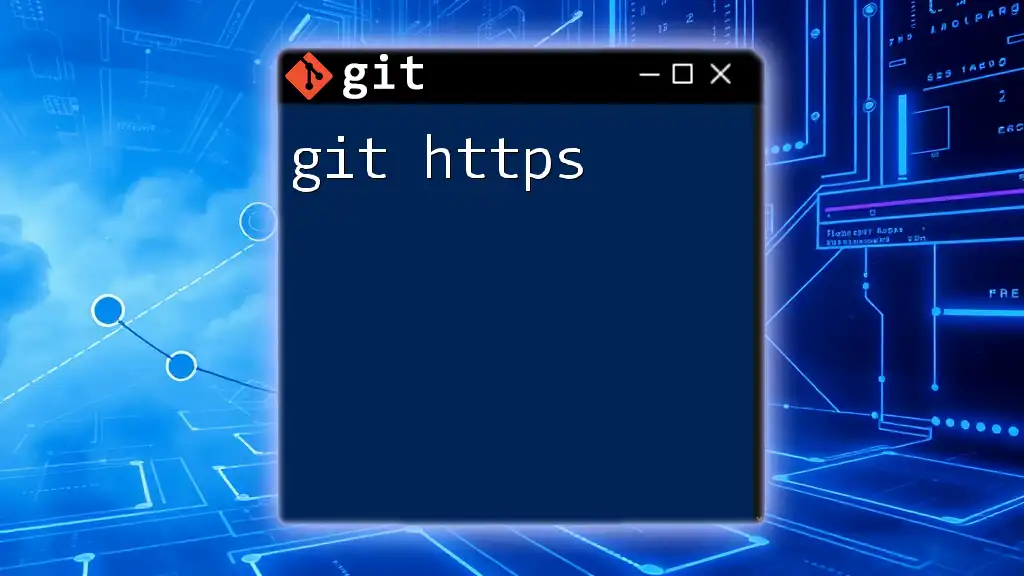
Key Differences Between Git SSH and HTTPS
Authentication Process
SSH:
- To authenticate via SSH, you must first generate an SSH key pair (public and private keys). You then add the public key to your Git account (like GitHub, GitLab, or Bitbucket). Once set up, Git uses your private key to negotiate access automatically.
HTTPS:
- With HTTPS, when you clone or push to a repository, you are prompted for your username and password. If credentials are saved via credential managers, you might only be asked once, easing the process for subsequent operations.
Security Considerations
Both SSH and HTTPS offer strong security, yet they tackle it differently.
-
SSH utilizes public-key cryptography, ensuring that only users with the correct private key can connect to the server. It is particularly secure as it avoids transmitting passwords.
-
HTTPS provides encrypted connections to mitigate eavesdropping but still involves the risk associated with password-based authentication, especially if credentials are not managed correctly or are transmitted unsecured.
In general, for highly sensitive operations or team environments, SSH is often the safer choice, while HTTPS can be more straightforward for personal repositories or occasional contributors.
Ease of Use
The ease of use can vary based on your familiarity with SSH keys and managing credentials.
-
SSH Setup: Requires generating SSH keys and adding them to your account. While it might seem technical, once established, it is seamless.
-
HTTPS Setup: Requires only your credentials but can become cumbersome if you frequently push/pull between different accounts or repositories.
In command-line terms, here’s how they differ:
SSH Clone Command:
git clone git@github.com:user/repo.git
HTTPS Clone Command:
git clone https://github.com/user/repo.git
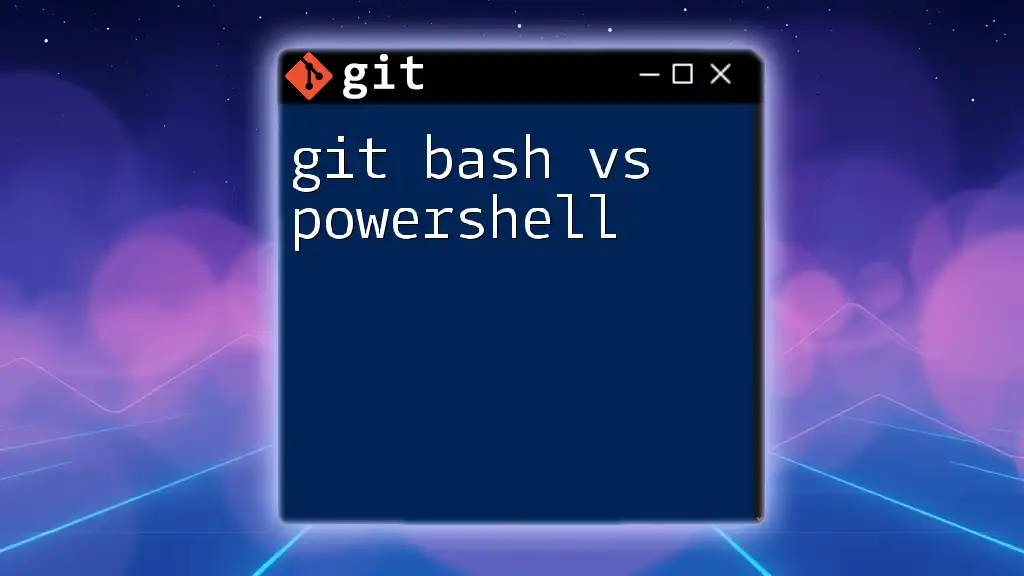
Setting Up SSH for Git
Generating SSH Keys
To set up SSH for Git, you first need to generate a pair of SSH keys. This can be done using the following command:
ssh-keygen -t rsa -b 4096 -C "your_email@example.com"
Follow the prompts to save the key pair (usually in `~/.ssh/id_rsa`). You may also specify a different name or location if desired.
Adding SSH Keys to Your Git Account
Once you have generated your SSH keys, the next step is to add your public key to your Git account.
-
Copy your public key to the clipboard. This can be done using:
cat ~/.ssh/id_rsa.pub -
Navigate to your Git hosting service (e.g., GitHub, GitLab, Bitbucket), go to the SSH keys section in your account settings, and paste the key.
Testing Your SSH Connection
After adding your key, it’s important to test successfully connecting to the repository:
ssh -T git@github.com
A successful connection will return a message welcoming you to GitHub.

Setting Up HTTPS for Git
Using HTTPS with Git
Using HTTPS is straightforward. Cloning a repository can be done simply by:
git clone https://github.com/user/repo.git
Managing Credentials
Managing credentials in HTTPS entails storing your username and password, allowing Git to remember them for future operations. You can leverage the Git credential helper, which stores them securely on your local machine. For instance, the following command configures Git to remember your credentials:
git config --global credential.helper cache
By default, this caches your credentials in memory for a default period, or you can choose to utilize a more secure credential manager.

When to Use SSH vs HTTPS
Use Cases for SSH
SSH is generally recommended for:
- Team Collaborations: When working on projects with multiple collaborators where updating code frequently is essential.
- Automation: When using scripts or CI/CD pipelines where password prompts should be avoided.
Use Cases for HTTPS
HTTPS is useful in scenarios such as:
- Personal Projects: Ideal for users who work on personal repositories without frequent interactions.
- Low-Frequency Contributors: Users who occasionally push changes to repositories and prefer the quick setup of username/password authentication.
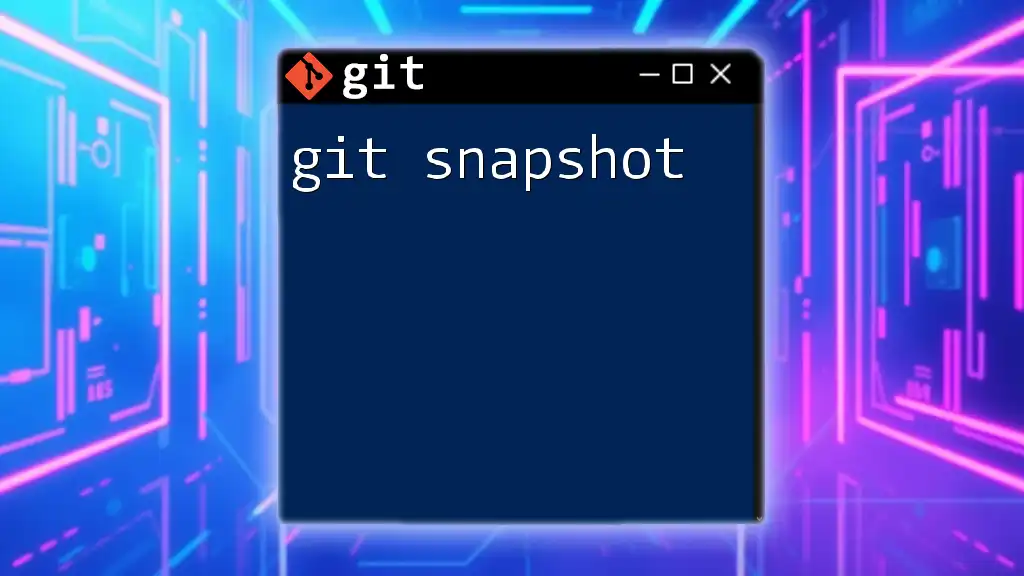
Troubleshooting Common Issues
SSH Troubleshooting Tips
If you encounter issues with SSH, consider checking:
-
Key Permissions: Ensure your private key file permissions are set correctly. The command should be:
chmod 600 ~/.ssh/id_rsa -
Correct Key Path: Make sure your SSH agent is aware of your keys by running:
ssh-add ~/.ssh/id_rsa
HTTPS Troubleshooting Tips
Common HTTPS issues generally relate to authentication problems, such as:
- Incorrect Credentials: If you enter the wrong username or password, you'll get an authentication error.
- Cached Credentials: Sometimes, old credentials are remembered. Clearing or updating cached credentials might be necessary.
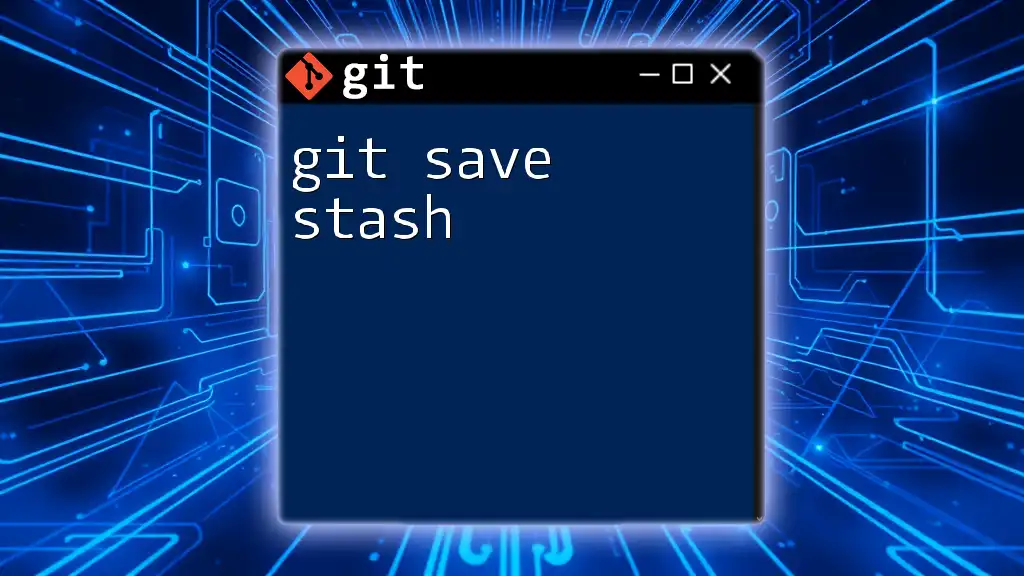
Conclusion
In the ongoing debate of git SSH vs HTTPS, both methods have their unique advantages and drawbacks, depending on your requirements. For security and convenience in collaborative environments, SSH is typically favored. On the other hand, HTTPS is a straightforward and user-friendly option for personal projects or sporadic contributions.
By understanding the differences and implementations of each method, you can choose the best authentication process for your Git workflows, thereby enhancing your overall productivity and efficiency.

